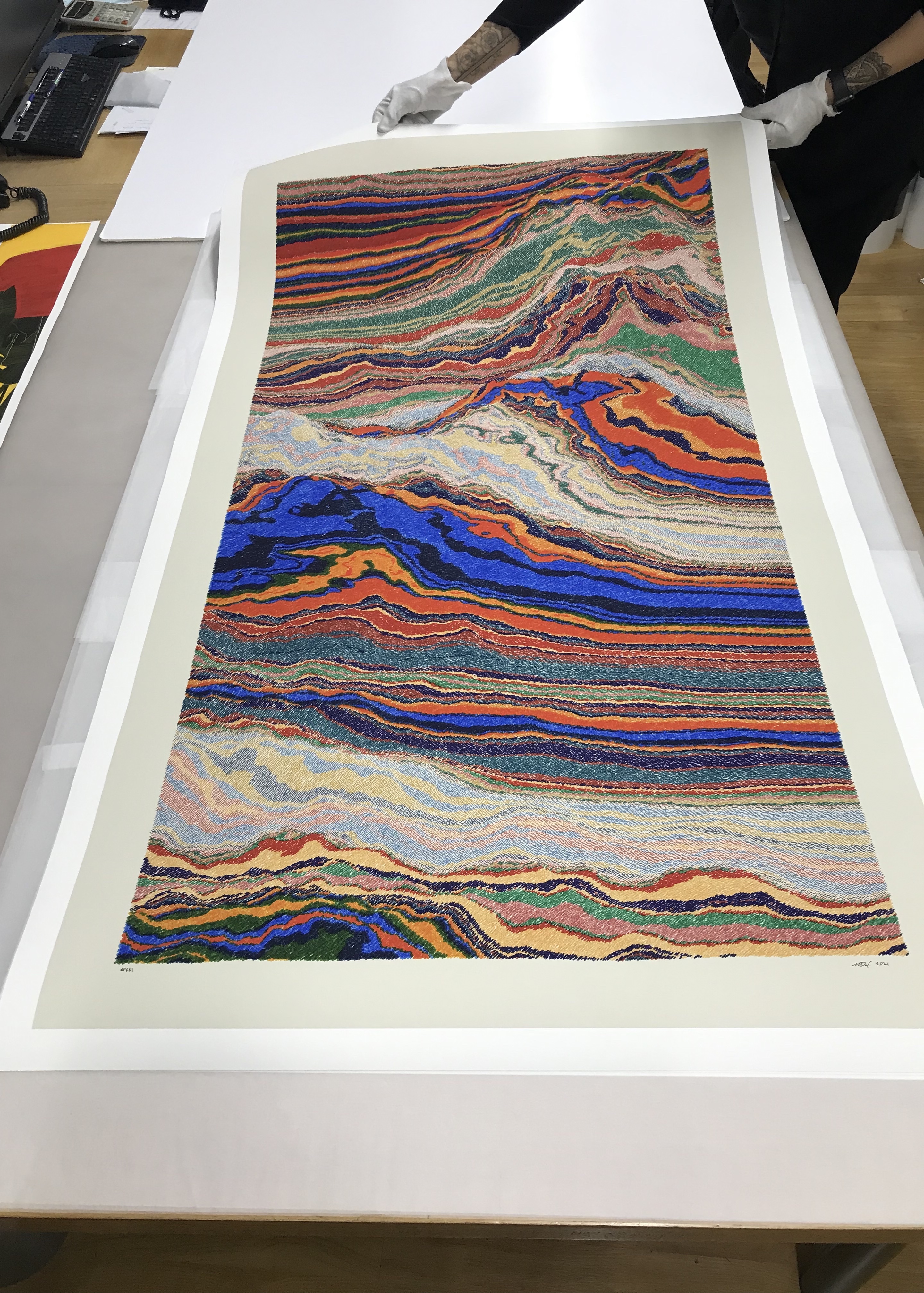How To Start Collecting Generative Art
People often ask me how to start collecting generative art. Although there isn't one right way, there are some common paths that can lead to a fulfilling experience.
This guide is written for someone with minimal cryptocurrency knowledge who wants to start collecting generative art for their home or personal collection.
What is generative art?
Generative art is created by rules based systems. Usually this means an algorithm that can produce certain types of images. For example, here are three outputs from the Fidenza algorithm by Tyler Hobbs:

All the images shown above are created by the same system with varying results. They all belong to the same family of images, but each is unique. Generative artists will typically restrict the number of outputs created by a given algorithm, introducing an element of scarcity to what is otherwise an infinite system.
Sotheby's recently hosted an auction for a number of popular generative algorithms, with some pieces selling for millions of dollars.

How does crypto fit into this?
Generative art has been around for decades, but has recently experienced a massive surge in interest due to blockchain technology, and specifically the Ethereum ecosystem.
Blockchain is a fantastic distribution mechanism because it provides a long-term storage solution for code based art. Before blockchain, someone buying a generative artwork would either need to maintain a computer that could run the code, or settle for having a print that represents the work without a way to reproduce it themselves.
Today, generative artists can upload their algorithms to the Ethereum blockchain and sell individual outputs from the algorithm as unique assets. This makes storage much simpler, and significantly improves liquidity for collectors. Selling a physical painting is hard, but selling an NFT is considerably easier thanks to the emergence of billion dollar marketplaces like Opensea.
It also makes it easier for buyers to verify the authenticity of the work, since blockchains provide a permanent log of every transaction, including the creation of the work from the artist.
How to get started
To get started, you will need two things:
- A self-custody wallet like Metamask, Coinbase Wallet, or Ledger
- Cryptocurrency (specifically ETH)
There are plenty of guides on how to do this, but I recommend this one from Coinbase.
Once you have your wallet, you'll want to spend some time familiarizing yourself with the artist landscape. This is a personal process – like music, no one can tell you what kind of taste you should have and everyone is drawn to something different.
If you're looking for inspiration, I recommend browsing the homepage of Gallery. The good folks over at Curated have a great collection. Platforms like Art Blocks, Bright Moments and fxhash are also a good way to discover artists.
Collecting generative art is an inherently social phenomenon. You will enjoy it more if you have someone to talk about it with. The best places to do this are X, Farcaster, and Discord. There is an entire community of people who go nuts over this stuff and will be happy to point you in the right direction.
Even better, try to meet with collectors and artists in-person. This isn't as intimidating as it sounds. The people who are into generative art are very different from the people who have traditionally collected art. It is a hobby for most, rather than a full-time job. There are lots of generative art meetups happening. If you want to organize one in your city I would be happy to signal boost to my network.
So you're ready to buy something
Once you've spent some time exploring and set your budget, you're ready to make a purchase.
There are two common ways to buy generative art:
- Primary sales, usually directly from the artist
- Secondary sales via marketplaces like Opensea

There are also commissions, where you can request the artist to make a specific piece for you, but that is atypical and something we'll cover another day.
If you're buying from a primary auction, make sure to mark your calendar for the date and time when the collection will be released. Similar to an IPO, primary auctions can be oversubscribed and lead to a competitive buying environment. If you happen to live in a city where Bright Moments has a gallery, we often host in-person minting events to make the process more accessible for newcomers.
If you're buying on secondary, you can either send a bid or purchase directly from a listing. If you're patient, sending bids can be a good way to get pieces for a bargain, especially on collections with lower liquidity.
Displaying generative art
Prints remain the best way to display generative art in your home, although screens are improving quickly.
Many artists support official prints for their work. Meridian, for example, is a generative project by Matt DesLaurier that prints extremely well and is a wonderful representation of the digital asset.

Some artists will also partner with print shops to offer official redemption windows that can only be redeemed by token holders. Metropolis by mpkoz can be redeemed by holders for up to one year after minting, which provides an extra incentive to be an early collector.

Keep going
Collecting is a slow process – don't try to rush it. It's not unusual to return to a collection dozens of times before deciding to make a purchase.
If you have any questions about generative or onchain art, please reach out. I'd love to chat.